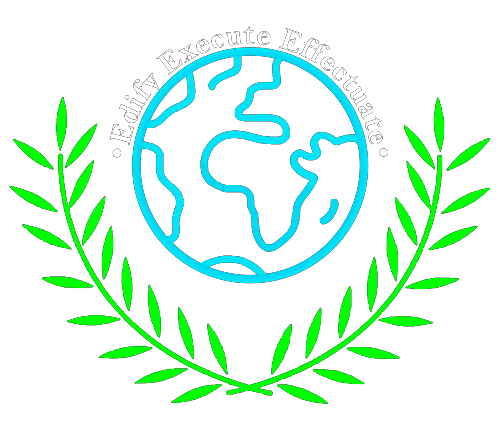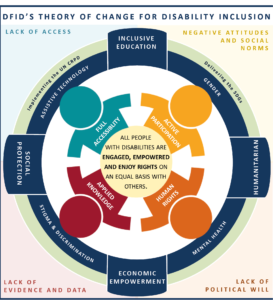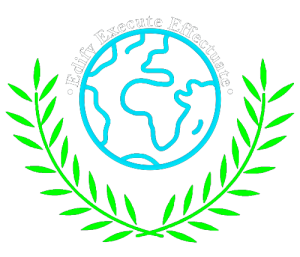-By Ravishen Jain, Finance Intern, IISPPR
ABSTRACT
The BRICS coalition encompassing Brazil, Russia, India, China, and South Africa, has emerged as a significant force in transforming the global economic and political framework. Initially founded to foster economic cooperation among emerging economies, evolved into a multifaced platform addressing financial stability, geopolitical strategy, and sustainable development. This research explores the coalition’s origins, its role in challenging Western dominance, and its contributions to economic Cohesion and global governance.
ORIGINS OF BRICS
BRICS is a coalition of major emerging economies aiming to reshape global economic and political dynamics. The idea of “BRIC” was first introduced by Jim O’Neill of Goldman Sachs in 2001, emphasizing the potential of these nations to Shape the global economy by 2050 due to their rapid growth, resource abundance, and demographic strength.
The evolution from a theoretical economic construct to an institutionalized strategic alliance began with the first BRIC summit in Yekaterinburg, Russia in 2009. Against the backdrop of the 2008 global financial crisis, nations emphasized reforms in global financial institutions and fostering a multipolar world order.
In 2010, South Africa joined the coalition, officially transforming BRIC into BRICS, joined with Geopolitical influence and a pivotal gateway point, strengthening the coalition’s global reach. In January 2025 the BRICS showed its powerful strength, as the first Southeast nation Indonesia, has become a member of BRICS, many countries like Egypt, Ethiopia, Iran, Argentina, and the united arab Emirates have also been a part of BRICS, emphasizing the potential of these nations.
KEY EARLY OBJECTIVES OF BRICS
Promote Economic Integration: BRICS expansion including Indonesia, Egypt, Ethiopia, Iran, and the UAE reflects a strategic effort, as trade has soared reaching $530 billion in 2022. The establishment of the New Development Bank (NDB) in 2014, with a capital of $50 billion, aimed at Financing infrastructure and development projects.
Reform Global Financial Governance: Revolutionized global financial governance from Western dominance to a multipolar system, promoting de-dollarization and local currency trade, as seen with BRICS Pay and the New Development Bank (NDB), which has authorized $30 billion in loans since 2014. In 2024 BRICS account for 37.3% of global GDP, strengthening to over 41 % as of January 2025.
Reduce Dollar Dependency: The global financial system has been reliant on the U.S. dollar, which serves 60% of global reserves, as the dominant currency. BRICS to reduce this dependency by promoting local currency trade and initiatives like BRICS Pay. The New Development Bank supports diversification projects and de-dollarization.
Geopolitical Coordination: BRICS focused on geopolitical challenges in regions like the Middle East and Eastern Europe, enhancing its role in global security, peace, and diplomacy, especially in Africa and South Asia. In 2024, BRICS accounted for 37.3% of global output, taking a more active role in shaping and addressing previous gaps in coordination.
Shifts in Global Power
Western powers, led by the United States and Europe, have dominated global systems through institutions like the IMF and World Bank, with the U.S. controlling 60% of reserves. This shaped global finance and trade, marginalizing emerging economies. (The BRICS and Emerging Economies in a Changing World” by Martin Zoromé).
BRICS emerged to counter this dominance, promoting diversified financial governance and reducing reliance on the U.S. dollar. Initiatives like de-dollarization, local currency trade, BRICS Pay, and the New Development Bank (NDB) challenge Western financial dominance.
In 2024, BRICS accounted for 37.3% of global GDP, becoming a key challenger to Western-led economic systems. Its trade surged to $530 billion in 2022, with increasing initiatives like China’s Belt and Road and NDB financing.
Economic Integration
BRICS’ cooperation focused on political dialogue and bilateral strategies aimed at challenging Western economic dominance. In 2015, BRICS trade reached $272 billion, driven by resource extraction, manufacturing, and agriculture (The BRICS and the Global Economy” by Joseph E. Stiglitz).
Economic disparities, such as China’s manufacturing focus and Brazil’s reliance on agriculture, hindered seamless cooperation. (Robinson, F. “The BRICS and the Future of Global Governance”). However, recent initiatives have addressed these challenges through institutional reforms, enhancing trade networks.
In 2024, intra-BRICS trade surged to $530 billion, with significant transactions conducted in local currencies, reducing reliance on the U.S. dollar. The New Development Bank (NDB), launched in 2014 with $50 billion initial capital, has approved over $30 billion in loans for infrastructure and sustainable development projects, (Zoromé, M. “The BRICS and Emerging Economies in a Changing World”).
Geopolitical Strategy
BRICS prioritized economic cooperation, with geopolitical alignment, emphasising trade and development while avoiding confrontation. Divergent priorities, such as Russia’s European security focus and China’s Asia-Pacific strategy, hindered unified geopolitical coordination.
The challenge stemmed from differing foreign policy objectives on sanctions, military interventions, and alliances with Western powers. However, crises like the 2008 financial crash and the COVID-19 pandemic prompted BRICS to adopt a more coordinated geopolitical stance, advocating for multilateral governance reforms.
In 2024, BRICS solidified its geopolitical strategy, addressing issues like trade imbalances, sanctions, and military interventions with a unified approach, increasingly collaborating on global challenges, including climate change, while promoting political autonomy for nations.
Bibliography
- Building better global Economic BRICs. (2001, November 30). Goldman Sachs. https://www.goldmansachs.com/insights/goldman-sachs-research/building-better
- Scaffardi, L. (2014). BRICS, a Multi-Centre “Legal network”? Beijing Law Review, 05(02), 140–148. https://doi.org/10.4236/blr.2014.52013
- Kenny, M. (2025, January 7). BRICS | Members, history, name origin, proposed currency, & Facts. Encyclopaedia Britannica. https://www.britannica.com/topic/BRICS
- International Monetary Fund (IMF). (2025, January 3). IMF. https://www.imf.org/en/Home
- Armijo, L. E., & Roberts, C. (2014). The emerging powers and global governance. In Routledge eBooks (pp. 503–524). https://doi.org/10.4324/9780203108765-33
- Power, M. (2015). The Rise of the BRICS. The Rise of the BRICS, 379–392. https://doi.org/10.1002/9781118725771.ch28
- Reavill, D. (2024, October 25). www.independentsentinel.com. https://www.independentsentinel.com/brics-the-emergence-of-a-global-super-alliance/
- The rise of BRICS. (n.d.). Russia in Global Affairs. https://eng.globalaffairs.ru/articles/the-rise-of-brics/
- (2024, June 27). BRICS: A new global order? https://www.hivelr.com/2023/06/brics-a-new-global-order/






